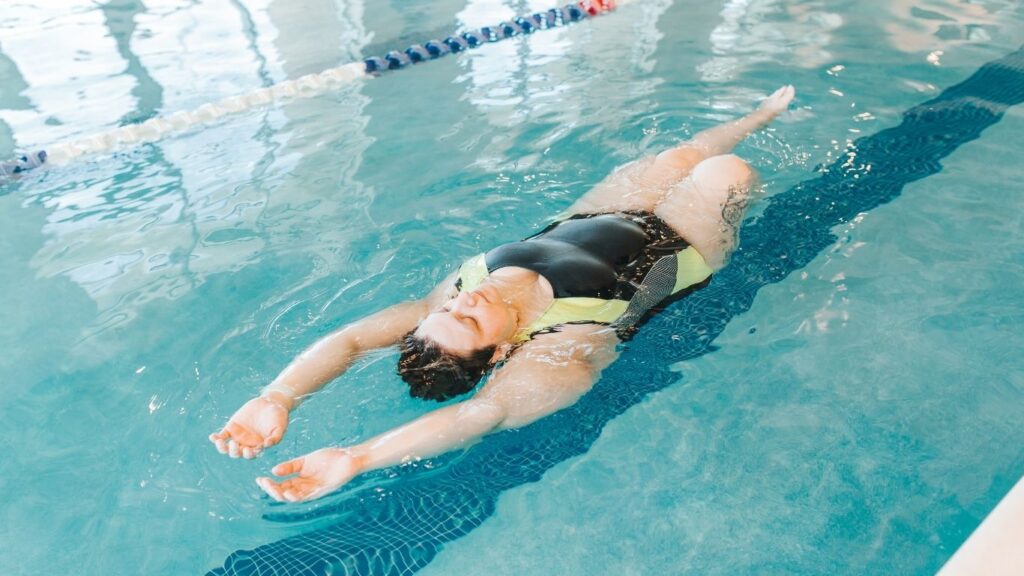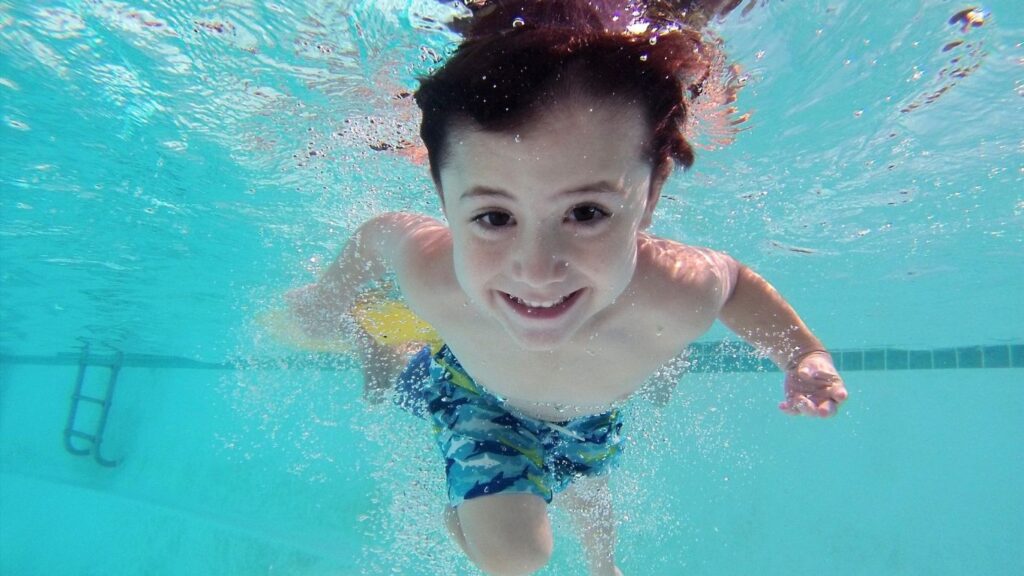Did you know that swimming burns up to 600 calories per hour while engaging all major muscle groups? An Olympic swimmer can complete laps for hours at a time due to finely honed cardiovascular endurance and muscular strength. Whether you’re a competitive athlete or someone looking to improve fitness, swimming’s ability to boost endurance is unparalleled.
Swimming stands out as a comprehensive, full-body workout that efficiently builds cardiovascular fitness and muscular endurance. It engages your arms, core, and legs in rhythmic, coordinated movements while minimizing joint impact. In this guide, we will explore the unique endurance benefits of each swimming stroke, provide effective training plans tailored to different skill levels, and share valuable tips on technique, breathing, and nutrition to help you maximize your swimming potential.
How Swimming Builds Endurance: The Full-Body Workout You Need
Overview of Swimming as a Full-Body Workout
Swimming is a unique workout that engages all major muscle groups simultaneously. Each stroke, whether it’s freestyle, backstroke, breaststroke, or butterfly, requires coordinated movements involving your arms, shoulders, back, chest, core, and legs. This synchronized effort means that swimming builds endurance and strengthens muscles throughout your entire body.
Unlike running or other high-impact endurance activities, swimming occurs in water, which offers natural resistance. This resistance challenges your muscles to work harder without placing additional strain on your bones and joints. The denser medium of water means that every movement requires more effort than on land, effectively giving you a total-body workout while sparing you the harsh impacts.
Moreover, water buoyancy reduces the effects of gravity on your body, making swimming an excellent option for those with arthritis, joint pain, or other physical limitations. It supports your weight, allowing you to exercise without significant stress on your joints. This low-impact environment makes swimming a versatile and accessible sport for nearly anyone, providing significant health benefits while minimizing the risk of injury.
Cardiovascular Benefits of Swimming
Swimming’s rhythmic breathing patterns and consistent movements promote optimal cardiovascular endurance. Unlike land-based activities, swimming requires controlled breaths coordinated with each stroke. This builds lung capacity and efficient oxygen exchange, which bolsters heart health over time. Additionally, swimming’s steady, full-body engagement keeps your heart rate elevated while minimizing strain on joints.

Compared to other cardio exercises like running and cycling, swimming can burn similar, if not greater, calories per hour. A moderate swim can burn up to 600 calories, while simultaneously working a wider range of muscles than many land-based activities, offering a comprehensive fitness routine.
Muscular Endurance Through Swimming Strokes
Freestyle:
Freestyle, also known as the front crawl, is an effective stroke for building core and upper body strength. Its alternating arm motion activates shoulder, chest, and upper back muscles while the flutter kick strengthens the glutes and thighs. The consistent rotation of the torso with each arm stroke engages the core, stabilizing the swimmer’s body and enhancing posture. Freestyle provides an excellent cardiovascular workout and is great for overall muscular endurance.
Backstroke:
Backstroke’s unique supine position (on your back) makes it ideal for improving shoulder mobility and lower back endurance. As you alternate your arm strokes, your shoulders stretch through a full range of motion, increasing flexibility while strengthening the upper back and lat muscles. The flutter kick stabilizes your lower body, working the lower back, glutes, and hamstrings. This stroke is particularly beneficial for those with back issues, as it provides a balanced workout for the posterior chain.
Breaststroke:
Breaststroke focuses on both coordination and muscle targeting. The circular arm movements strengthen the chest and shoulders, while the whip-like frog kick targets the thighs and hip muscles. Additionally, the simultaneous arm and leg movements, combined with the need to time the breathing properly, improve overall coordination and rhythm. This stroke is especially helpful for improving leg flexibility and toning the upper body.

Butterfly:
Butterfly is known for its intensity and ability to build overall strength and endurance. The powerful, simultaneous arm strokes and undulating body motion challenge the shoulders, chest, and back. The distinctive dolphin kick targets the core, glutes, and legs, creating a comprehensive workout. Though difficult to master, butterfly offers unparalleled benefits in strength training and muscular conditioning for those who commit to it.
Effective Techniques to Maximize Endurance
Tips for Improving Endurance in Each Stroke:
- Freestyle: Keep your body horizontal with a slight tilt down, minimizing drag. Focus on long, smooth strokes, rotating your body to engage the core and maintain a steady breathing rhythm every two or three strokes.
- Backstroke: Maintain a streamlined position by tucking your chin and keeping your hips high. Emphasize steady arm rotations, and use flutter kicks to generate speed while reducing drag.
- Breaststroke: Stretch your arms forward fully with each pull, and snap your legs together forcefully in the frog kick. Aim for a consistent tempo, and glide longer between strokes to save energy.
- Butterfly: Time the body undulation with the dolphin kick and arm pull for seamless propulsion. Reduce drag by keeping your head low during the recovery phase and breathe every two strokes.
Interval Training Techniques:
- Practice interval training using multiple strokes for variety and balanced conditioning. For example, swim five sets of 100 meters, each consisting of 25 meters per stroke (freestyle, backstroke, breaststroke, butterfly). Take short breaks (10-15 seconds) between sets to build endurance.
Breathing Techniques:
- Freestyle and Butterfly: Inhale quickly and deeply through the mouth during the breathing stroke and exhale consistently underwater.
- Backstroke and Breaststroke: Time your breathing with each arm recovery or pull, ensuring a steady rhythm. Practice bilateral breathing to balance your body and prevent fatigue, improving efficiency across longer swims.
Sample Training Plans for Building Endurance
Beginner Training Plan:
- Frequency: 3 times per week.
- Warm-Up: 5-10 minutes of light stretching followed by a relaxed 100-meter swim using any preferred stroke.
- Main Set: Start with 4×50 meters at a moderate pace, resting for 20-30 seconds between sets. Gradually increase to 6×50 meters as endurance improves.
- Cool-Down: Swim a gentle 100 meters, focusing on consistent breathing patterns and relaxed strokes.

Intermediate Training Plan:
- Frequency: 4-5 times per week.
- Warm-Up: Stretch for 5-10 minutes and then swim 200 meters using various strokes at a relaxed pace.
- Main Set: Perform 5×100 meters, alternating strokes every 100 meters. Rest for 15 seconds between sets. Incorporate interval training with 3×200 meters at a steady pace with a 30-second rest period. Gradually reduce rest intervals while increasing set distance over time.
- Cool-Down: Swim a gentle 200 meters, ensuring a consistent breathing rhythm while gradually decreasing speed.
Warm-Up and Cool-Down Exercises:
- Stretching, dynamic arm circles, leg swings, and body twists prepare muscles and joints. Post-swim, perform static stretches for the shoulders, back, and legs to aid recovery, increase flexibility, and prevent injury.
Tracking Progress and Setting Goals
Swimmers can track progress by recording distances covered, times per set, and improvements in stroke efficiency. Use a training journal or a swim app to log daily workouts, noting times for intervals, total laps, and technical adjustments. For short-term goals, set realistic weekly lap or time targets, and aim for improved form. Long-term goals might include completing a triathlon, increasing lap counts, or mastering a new stroke. Periodically reassess goals, adjusting them to reflect current performance, while staying motivated with small milestones that celebrate improvements along the way.
Also read: Maximizing Full-Body Fitness: The Comprehensive Benefits of Kettlebell Training
